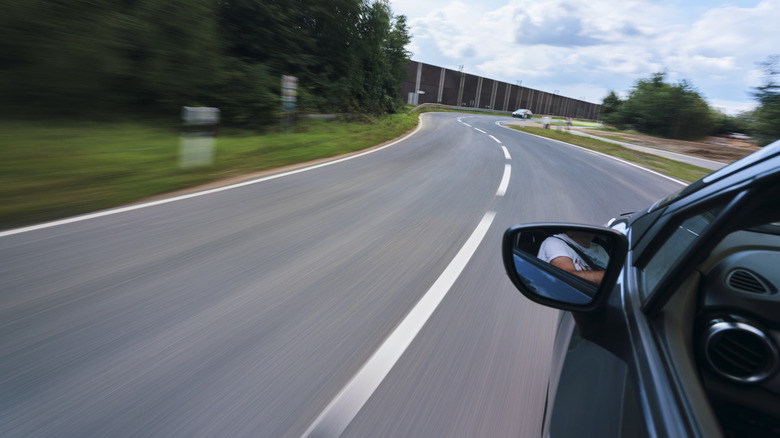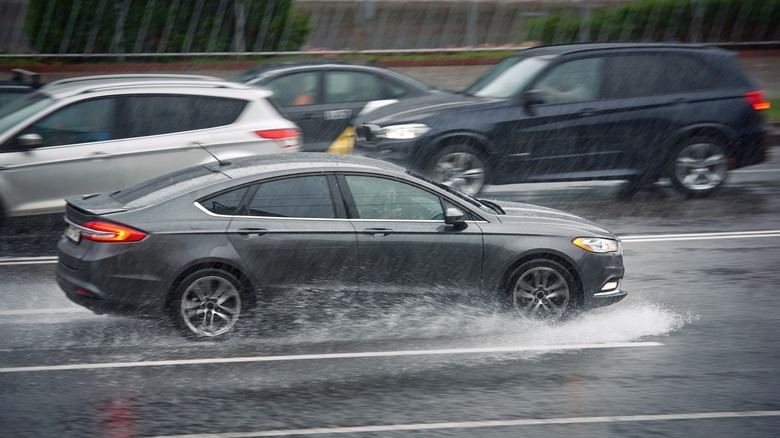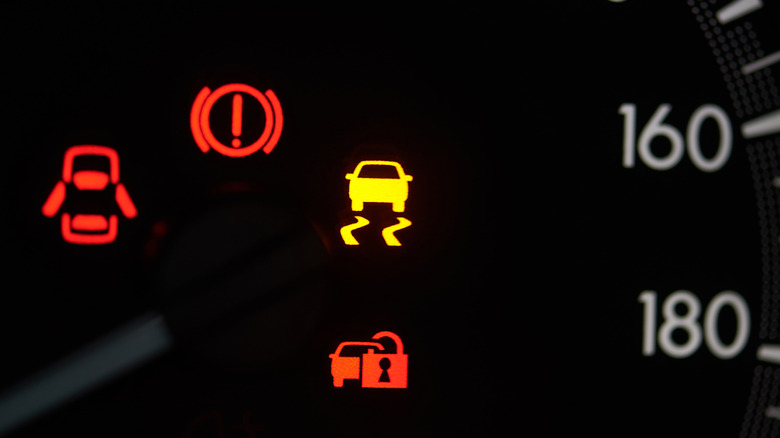What ESP Stands For In Cars (And Is It Safe To Drive With The Warning Light On?)
Among the many dashboard warning lights in a modern car, the ESP, or Electronic Stability Program, is what industry experts call the "guardian angel." Known by many names including vehicle stability assist, dynamic stability control, or any brand-named derivative (Porsche has the Porsche Stability Control), ESP is the brainchild of German engineer and inventor Anton van Zanten.
Van Zanten developed the world's first electronic anti-skid system in 1995 while working for Bosch, calling it the vehicle dynamics control system. German automaker Mercedes-Benz has been working with electronic systems to control vehicle dynamics since the late '70s, but it introduced the world's first car with ESP in 1995 with the S 600 Coupe (C140).
ESP has been standard for Mercedes-Benz vehicles since 2000 and has, since then, saved countless lives and prevented many accidents. Research shows that ESP has reduced deaths in collisions caused when drivers lose control by 38%, and when a car has ESP, it's 27% less likely to be in a single-car crash.
How does ESP work?
The Electronic Stability Program uses sensors to monitor vehicle speed, steering angle, and yaw rate. If it senses the vehicle is skidding when braking or cornering, it automatically applies rapid braking pressure to the offending wheel or wheels to mitigate the slippage, helping point the nose of the car in the intended direction.
Everything happens simultaneously without any intervention from the driver, and the system works quietly and spontaneously while driving. The ESP system also reduces the engine's torque to help further stabilize the vehicle. Moreover, ESP helps to reduce understeer and oversteer while driving, acting like a safety net in severe weather, snow, or slippery conditions.
However, ESP differs from traction control despite acting on the same principles of improving handling and safety. ESP works by braking individual wheels and mitigating engine torque. Traction control focuses on maintaining traction between the wheels and the road, using the brakes and reducing the torque output to tame the spinning wheels.
Is it safe to drive with the ESP warning light on?
It's not unusual for the ESP warning light to illuminate when driving over slippery, loose, or challenging terrain. In some cars, turning off the ESP will trigger the ESP warning light to turn on, alerting the driver that the system is not active to intervene. The problem is when the ESP warning light stays on (or starts blinking) despite your not turning it off, which could happen for many reasons, such as traction loss, low tire pressure, faulty sensors, problems with the braking system, a bad anti-lock brake sensor, or wiring issues. In addition, an incorrect wheel alignment, balding tires, and a failing car battery could trigger the ESP warning light.
Since the problem could stem from many possible sources, it's critical to immediately bring your vehicle to a mechanic when the ESP warning light stays on. The good news is that your car will remain operable despite having an illuminated ESP warning light, and you can drive normally without experiencing issues or malfunctions with the engine and gearbox.
The bad news is that having an illuminated ESP warning light could also mean the system is not working. You'll need to drive conservatively until the problem is resolved, specifically in rainy, wet, or snowy conditions. If the ESP warning light suddenly illuminates while you're cruising on the highway, reduce your speed and have the problem checked as soon as possible.


